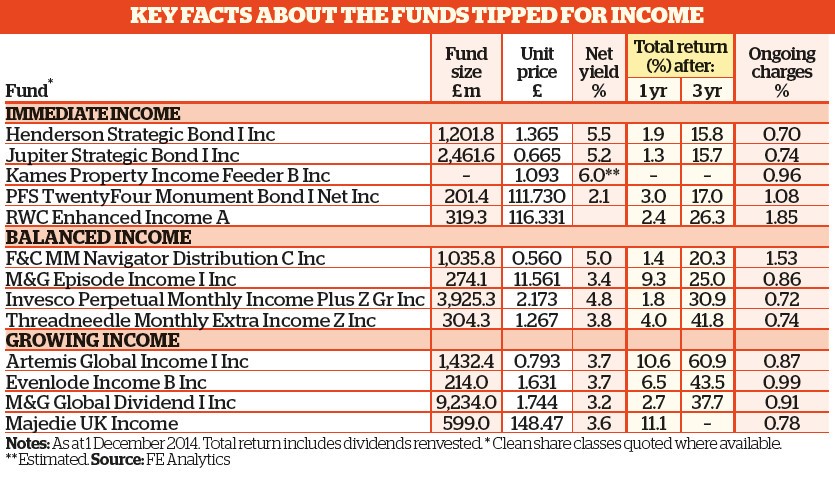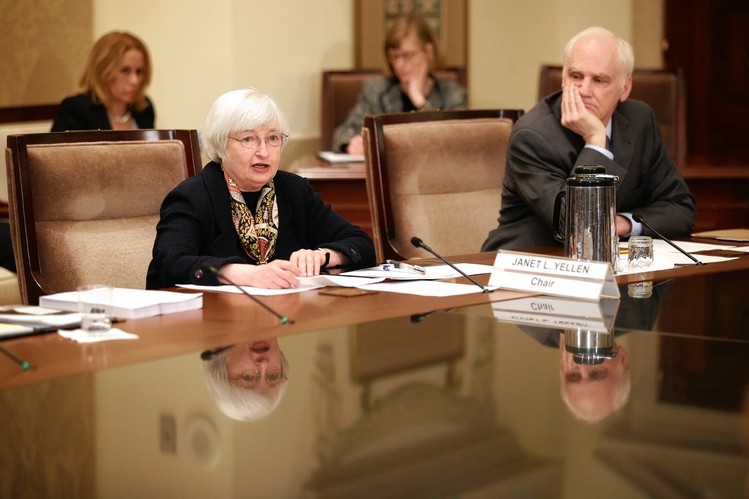The bond funds tipped to protect savers from rising interest rates Yahoo Finance UK
Post on: 6 Июнь, 2015 No Comment

RELATED QUOTES
Interest rate rises normally spell losses for bond holders, but some funds can weather the storm. Here we ask the experts to name the bonds funds that will hold up well when interest rates rise
Investors face the prospect of dealing with an interest rate rise later this year, thanks to a stronger British economy. The financial markets had indicated an increase in Bank Rate to 0.75pc in April next year. But that was before the head of the Bank of England last week warned that it could happen much sooner.
One highly regarded bond fund manager, Richard Woolnough of M&G, expects the first rise to take place as soon as October.
If a rise to Bank Rate within the next 12 months is a case of when rather than if, there are serious implications for savers who take income from bond funds, who could experience large capital losses if they hold vulnerable investments that they intend to sell within the next few years.
Here, we explain how to spot whether your fund contains the type of bonds most likely to crash — and name some of the funds that give you a better chance of protecting your money.
= Why this matters =
An interest rate rise is bad news for bond investors.
When rates rise, bond prices tend to fall as old issues look less attractive.
This could potentially eat into large gains accrued by savers since 2009. The average corporate bond fund, which lends money to companies in exchange for interest payments, has returned 50pc in five years.
The funds have performed well because lower interest rates made the fixed return appear attractive. They were also seen as a safer option in the midst of financial crisis. Investors piled in, pushing prices up.
On the other side of the coin, the interest paid by a bond, called a coupon, is fixed. So when prices rise, this fixed rate looks less appealing. The measure of how attractive the interest rate is compared with a bond’s price is called its yield: a low yield means that you pay a lot of money for little interest, and vice versa.
Price and yield move in opposite directions, operating in a see-saw motion.
Consequently, when interest rates rise, yields should follow suit. This offers fund managers the chance to secure better income, which could offset some of the capital loss.
= Bonds most at risk =
Some bonds are more exposed to rate rises than others. You can check which type of bonds your fund manager holds online through data websites such as Trustnet.com and Morningstar (NasdaqGS: MORN — news ) .co.uk.
The most vulnerable are bonds furthest from their maturity date and with the lower yields, such as longdated government bonds. The British government is highly unlikely to default, which is why investors must pay a high price for a meagre rate of return. When interest rates rise these bonds have the furthest to fall, so are therefore more vulnerable.
Fund managers use a nifty rule of thumb to work out how much a bond’s price might fall: they simply multiply the duration by the interest rate rise. So if a bond duration is 10 years and interest rates rise by 1pc, the bond’s price is expected to fall by 10pc.
Gemma Godfrey, of wealth manager Brooks Macdonald, said: When you lend money, you are more exposed the longer you have to wait for repayment. If the environment changes, your return could look out of sync. That’s why it helps if the bond matures sooner.
= ‘Safest’ funds =
= TwentyFour Monument Bond =
This fund is run by a specialist bond fund company, which may be of some comfort because such a narrow focus is rare and suggests expertise. The fund mainly invests in floating rate loans, mainly from banks. A floating rate loan has adjustable, rather than fixed, interest rate. So therefore these bonds are flexible and less sensitive to rate rises.
David Thornton, a fund manager at Premier (NasdaqGS: PINC — news ) who researches bond funds, said there was negligible interest rate risk and expected the fund to continue to grind out steady positive returns.
= M&G UK Inflation Linked Corporate Bond =
A number of fund managers have, for the reasons outlined above, been buying bonds of shorter duration ahead of the expected rate rise. Bonds with one to three years to run are therefore less exposed to interest rate movements.
Mike Deverell of wealth manager Equilibrium tipped the M&G UK Inflation Linked Corporate Bond fund for this reason.
This fund lends to companies rather than governments and predominately invests in short-dated bonds, he said. If inflation goes up, the bonds it holds should do well even if rates are also rising.

= Kames Absolute Return Bond =
This fund invests in all types of bond, but also favours bonds that have a short life. The fund also uses complex derivative instruments to hedge its bets on certain bonds — in other words, it also gains if the price falls.
Mr Thornton said: This fund might not have produced returns as high as rivals’ since 2009, but is virtually insensitive to rising interest rates and should in fact benefit from higher rates in the long term.
= Rates caution =
Rising interest rates will offer little respite to savers because returns on deposit accounts have disconnected from the official Bank Rate, a director of a leading savings provider has said.
James Blower, head of savings at Shawbrook Bank, which regularly tops the best-buy tables, said savers should expect only marginally better best-buy deals because most banks have no desire to attract deposits.
The big banks have dropped lending to focus on other things, whether investigations into foreign exchange trading or dealing with a mis-selling legacy. Banks have to be able to lend cash out to justify attracting money in, and every time it looks as if the focus will return to the bread and butter of banking — deposits and lending — something emerges that diverts attention.
Last Thursday Mark Carney, the Governor of the Bank of England, said interest rates would rise earlier than expected — perhaps as soon as this year. Economists believe the Bank will act slowly, nudging rates higher by as little as 0.25 percentage points at a time. This means it could be many years before rates return to the 5pc levels seen before the financial crisis, if at all.
Savings (Shenzhen: 300056.SZ — news ) rates are likely to lag behind rises because banks only act when they are spurred by competition from rival companies.
Markets now price in the first rate rise in November or December 2014. Azad Zangana, European economist at Schroders (LSE: SDR.L — news ). said: Mr Carney is less concerned about the timing for the first hike than the path thereafter, which is likely to be gradual and limited.
However, Mr Zangana also pointed out that there were plenty of caveats in Mr Carney’s speech, leaving room for another change of heart.
• Get Twitter alerts for all our investing stories: follow @telegraphinvest
• Investment tips every week by email sign up here














